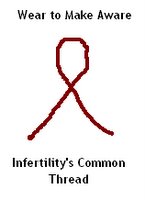Varicocelectomy
by Serentity
Why would you be having a Varicocele Repair (Varicocelectomy)?
A varicocele is a tangle of enlarged blood vessels (a varicose vein) in the testicles. It is fairly common, affecting 15 % of men overall and about 40% of men with diagnosed infertility. A varicocele is caused by faulty valves in the blood vessels, allowing blood to pool in the vein, increasing the temperature in the testicles and therefore depressing sperm production.
A varicocele repair – also known as a varicocelectomy or varicocele ligation – is a surgical procedure in which a urologist will tie off the enlarged and weakened veins. It is generally done on an outpatient basis, under general anesthesia, though some urologists prefer to use a local anesthesia.
What you can expect
The night before the procedure, you will be instructed not to eat after midnight. Someone must take you to and from the procedure – like with all procedures under general anesthesia, you will not be allowed to drive yourself home.
The procedure itself will take 1-2 hours, depending on the urologist. Once in the recovery area, you will be required to eat and drink something and walk before you can be discharged.
Most surgeons do the procedure as a laparoscopy, so you will have about a 2-3 inch incision on your groin. Expect some pain in the first few days from the incision; you will also have a lot of bruising in the area. That is normal. It will take about 2-4 weeks for the incision to heal completely, however, generally you can resume light work duties 1-2 days after the surgery and full strenuous activity within 1 week.
Generally you will be given a prescription for pain medication for the first few days, but in many cases Tylenol is sufficient to control the pain.
Your urologist will schedule a post operation follow-up with you within a couple weeks of the surgery. If the surgery is infertility related, you will have to undergo both a 3 and 6-month post operation semen analysis.
Problems that may arise
You may have some problems recovering from the surgery; some issues include infection in the incision site and/or potential fluid build-up in the scrotum.
Some people also report slight pain during sex for a couple of weeks after the procedure – mostly related to the bruising in the pubic area. This is normal. If you feel severe pain or recurring pain once the bruising is gone, call your doctor.
Personal tips
A bag of frozen peas (or corn or just ice) is VERY nice during the recovery period. My husband’s urologist used both a local in the incision area and general anesthesia, so he didn’t feel much pain at all until the next day. We found that if he iced the area every couple of hours, he didn’t need as much pain medication.
It takes longer than you’d expect for the incision to fully heal. Both my husband and I were concerned when his incision wasn’t fully closed three weeks after the procedure. However, his urologist told him at the 3 week post-op appointment that he was healing just fine.
The Daily News
LFCA Latest Issue: Friday, September 25, 2009.
Latest Post on BlogHer: Parenting after Infertility.
My Status: Fed Josh's almonds to the squirrels. They needed them very badly.
LFCA Latest Issue: Friday, September 25, 2009.
Latest Post on BlogHer: Parenting after Infertility.
My Status: Fed Josh's almonds to the squirrels. They needed them very badly.
Wednesday, July 26, 2006
Subscribe to:
Post Comments (Atom)



























4 comments:
Just want to let anyone know that it does work!!!! My dh had the surgery in August and we conceived in march. (We didn't try some of those months in between.) I also feel that vitamins helped as well. Never, never give up!!!!!!!
my husband had a bilateral varicocelectomy in jan 2007, and we conceived in may. previous to that, we had tried for a year w/ no success. not only is he relieved of his discomfort, but we have a sweet baby girl due in february! if you are considering surgery, it does work! our surgeon gave us a 20-30% chance of getting pregnant post surgery and here we are!
Thanks so much for your straightforward explanation. dh is scheduled to have this operation tomorrow and is pretty nervous. I have mostly found very clinical, jargony information online. Fingers crossed and heads bowed in prayer as we try this procedure and hope it helps us add to our family!
Great explanation! My DH had the surgery in January 2009 and we just had his post-surgery SA...and there was improvement! his count went from 72 mil to 174 mil, and his motility went up from 2-5% to 10%. GL to anyone thinking about having the surgery, I know it's a big decision with no guarantees!
Post a Comment